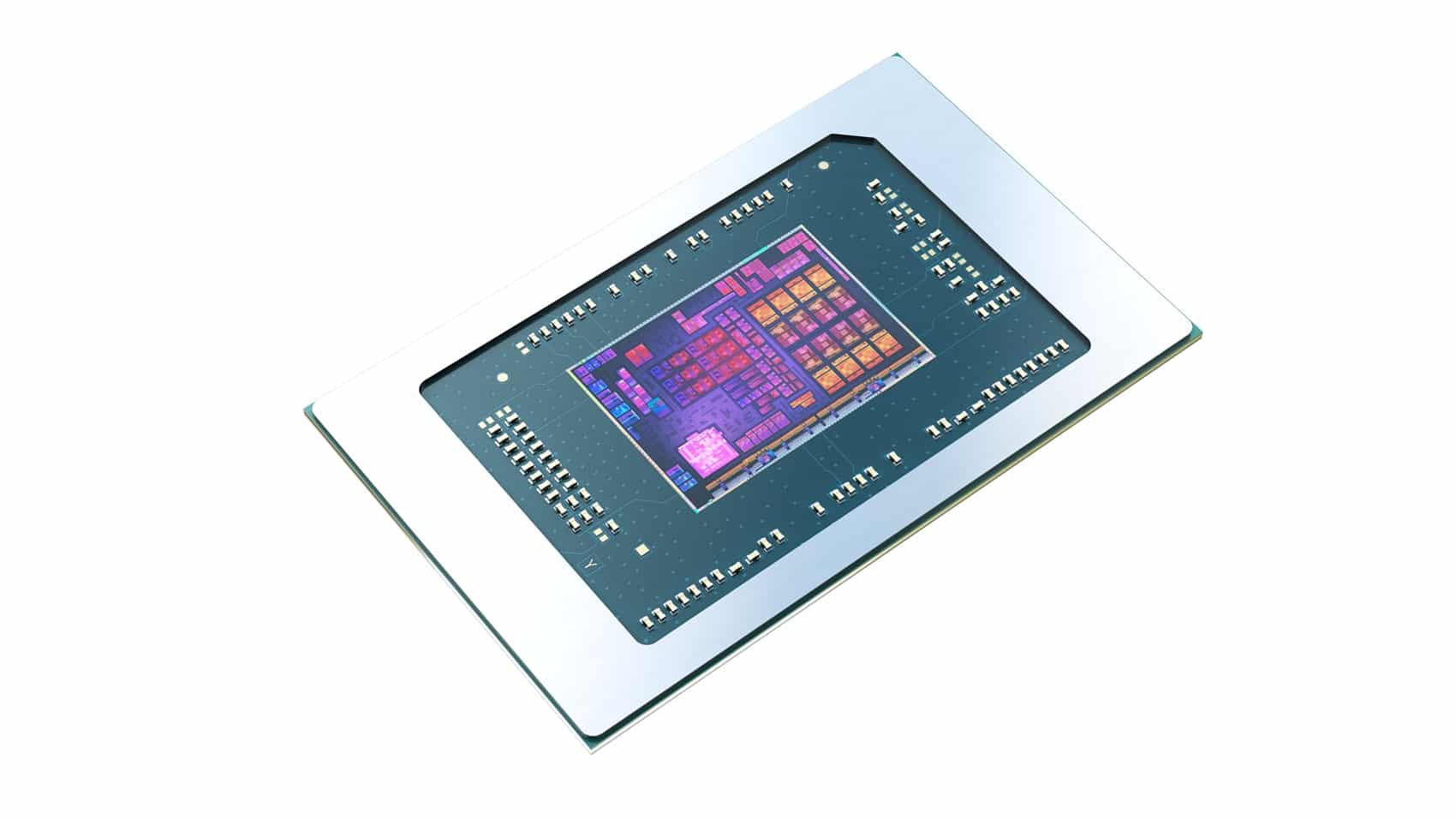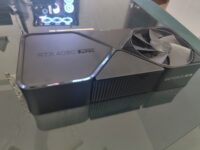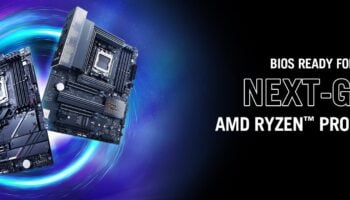AMD is prepping the launch of its next-gen Ryzen 9000 processors featuring the Zen 5 core architecture later this year. In addition to the “Granite Ridge” desktop lineup, Team Red is planning for the simultaneous launch of the Ryzen 9000 “Strix Point” mobility family. We know a lot about the Ryzen 9000 desktop parts but very little about their mobile counterparts. During an “AI PC Summit” held in Beijing, AMD revealed its mobile CPU and GPU roadmaps.
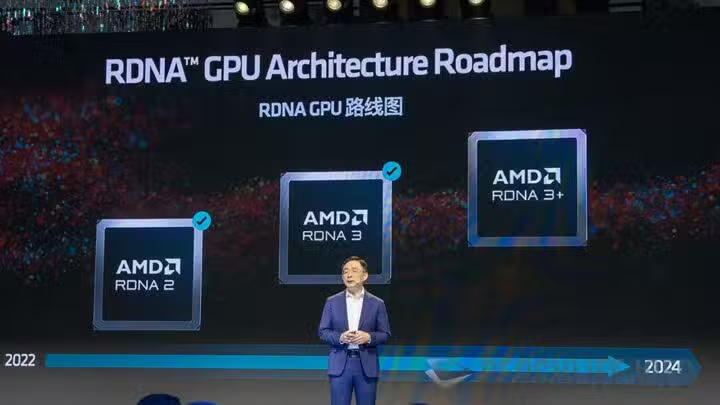
The Ryzen 9000 “Strix Point” mobile processors will launch later this year, equipped with an upgraded CPU, GPU, and NPU. The Zen 5 architecture will be introduced in the mobility space simultaneously with the desktop market. Additionally, the RDNA 3+ graphics architecture will also make its debut, offering dGPU-level gaming performance at a much lower power budget.
The Radeon RX 7000 GPUs have unusually high power consumption, falling short of their 3GHz frequency. Getting these chips to run at 3GHz or higher is often not doable. RDNA 3+ will (allegedly) improve the clock scaling and power efficiency of AMD’s latest graphics architecture.
RDNA 3+ is an optimization of RDNA 3 rather than a generational upgrade.
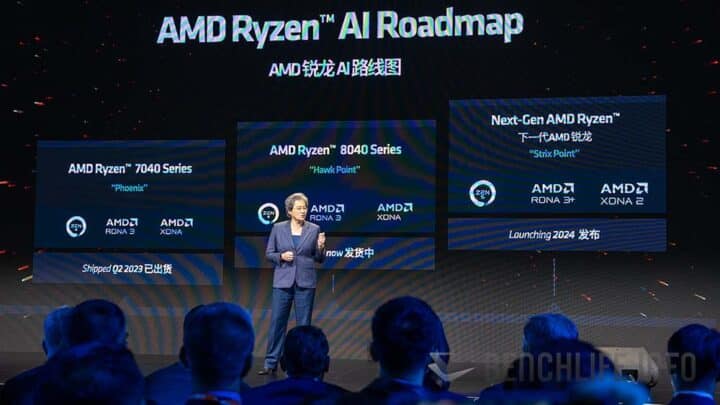
The Ryzen 9000 (9040) mobile family will comprise monolithic “Strix Point” and modular “Strix Halo” designs. The former will leverage a hybrid core architecture consisting of (up to) 12x Zen 5 and Zen 5c cores, with up to 16 RDNA 3+ Compute Units on the GPU side.
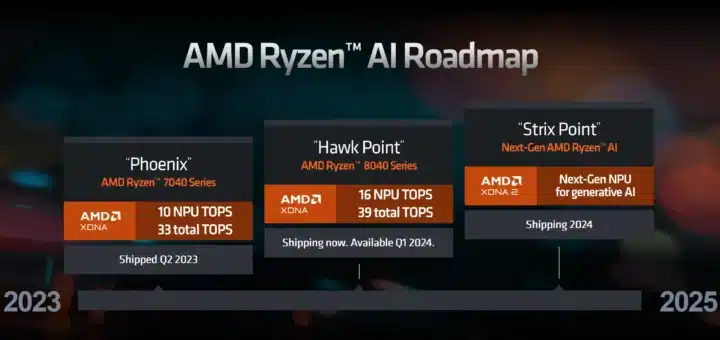
Strix Halo will offer 16 cores (Zen 5) backed by 64MB of L3 cache and over 20 RDNA 3+ GPU units. The latter is a little hard to fathom as it’s essentially a PS5-sized APU (but faster) likely to displace most low and midrange dGPUs. Officially, AMD has only confirmed Strix Point on its roadmap.
The Ryzen 9000 “Strix” processors will also feature an upgraded NPU, bringing a 3x improvement in generative AI performance over Hawk Point. This will be achieved using the XDNA 2 chip, bolstering the AI throughput of Strix Point to nearly 50 TOPs.
Via: Benchlife.
